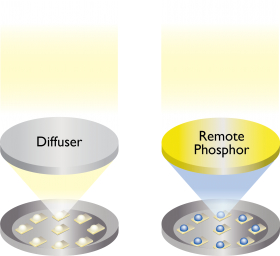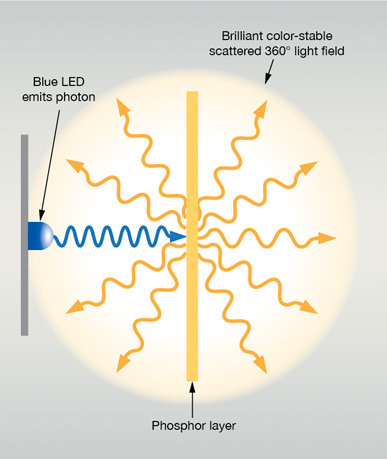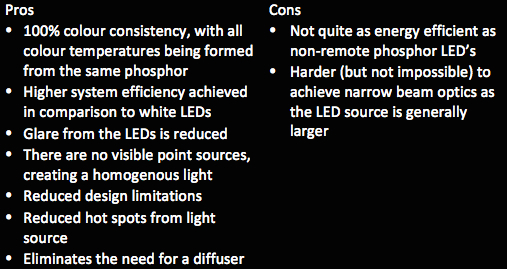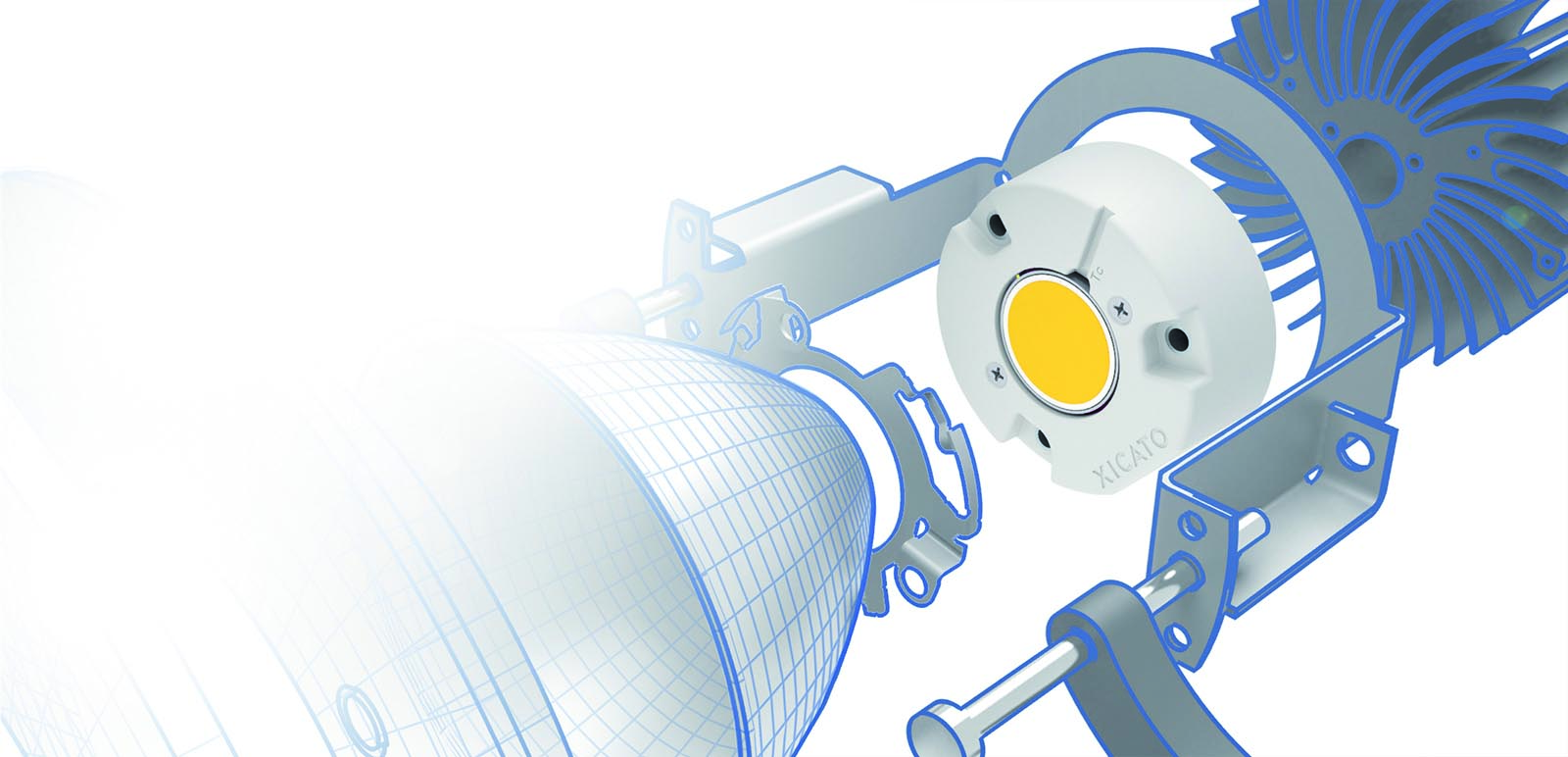We take a look at the new technology
Here at Nulty, we’ve recently been seduced with the new technology of remote phosphor Light Emitting Diodes (LEDs).
For those that are yet to be enlightened (pun intended) by this, you might not have known it, but most LED chips utilised within LED lamps and luminaires actually start life as blue light sources.
Now, you may be asking, why blue? Why not just produce an LED that provides the colour we want? The answer is simple: Blue LEDs are actually a lot more efficient in energy consumption and converting energy to light (lumens per watt) than any other colour, giving us more light for the same amount of power. In order to achieve the desired white light from the source, the blue LEDs are given a “phosphor filter” to give the desired colour temperature of white light.
In most cases the phosphor is incorporated into the LED dye package, but with the new and emerging technologies of remote phosphor light sources, the phosphor is actually bonded to an independent substrate. This alternative solution creates a light-mixing chamber between the blue LEDs and the substrate, where white light can be achieved.

There are several pros and a few cons for this new way of lighting with LEDs:

Nulty has so far seen this use of phosphor utilised in linear and spotlight sources, and has utilised it on architectural lighting design projects such as DKNY, Bond Street.
We’ve been dazzled by this new technology, giving us more efficient and reliable light sources to embrace into our lighting design schemes, achieving a significantly higher quality of illumination!
Blog post by Jessica Travers


